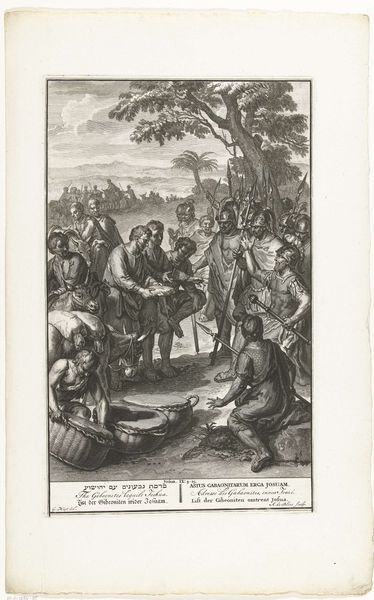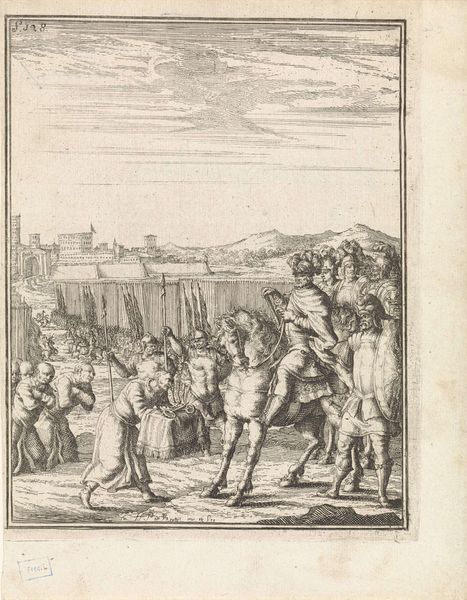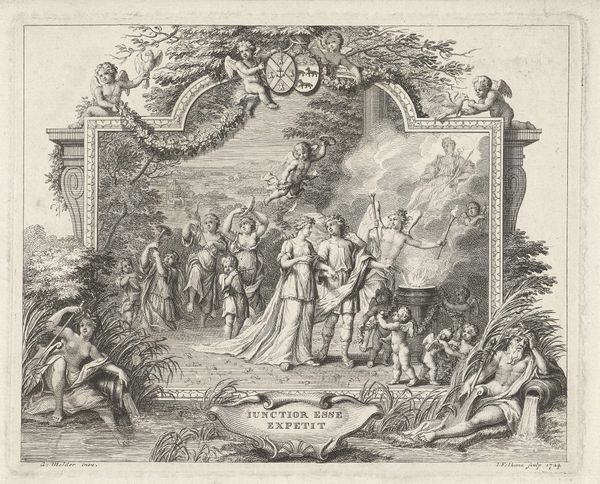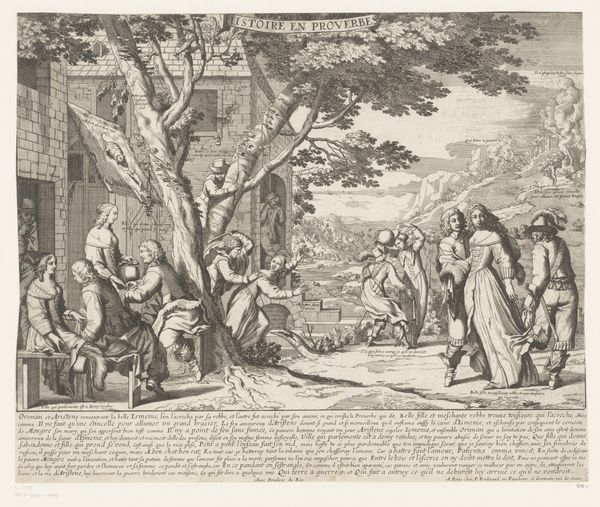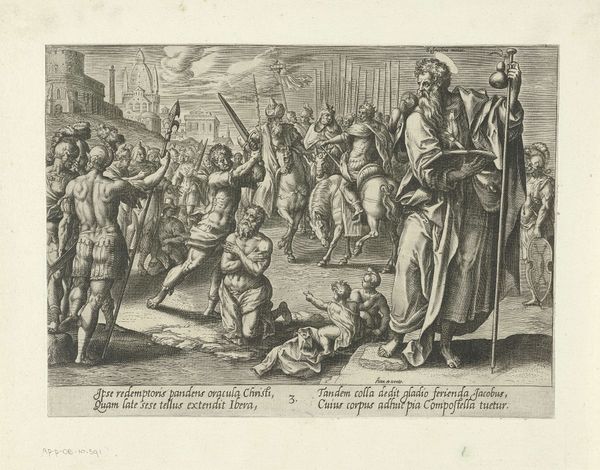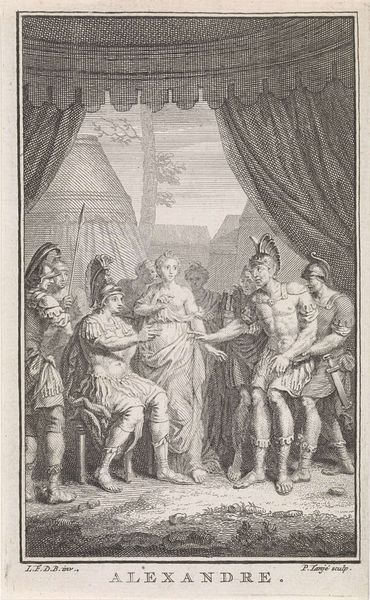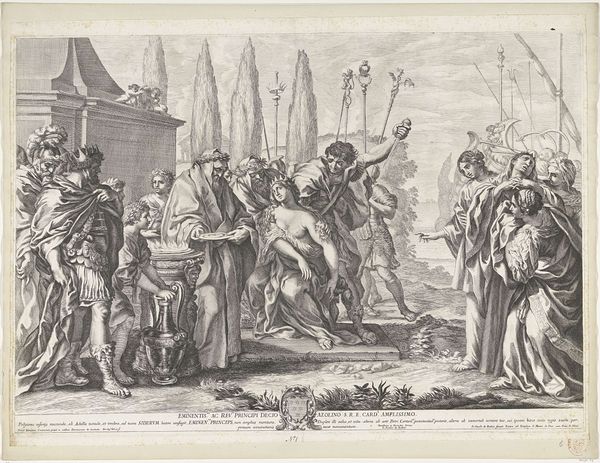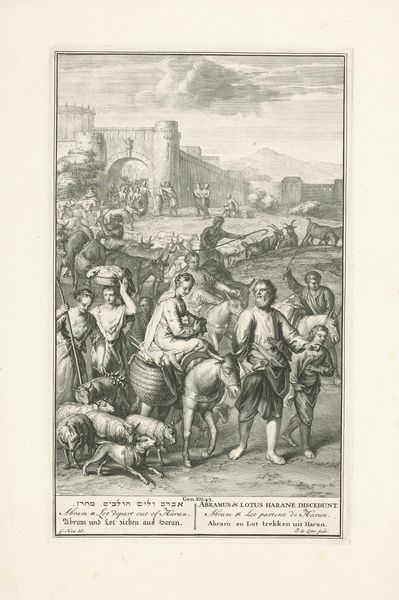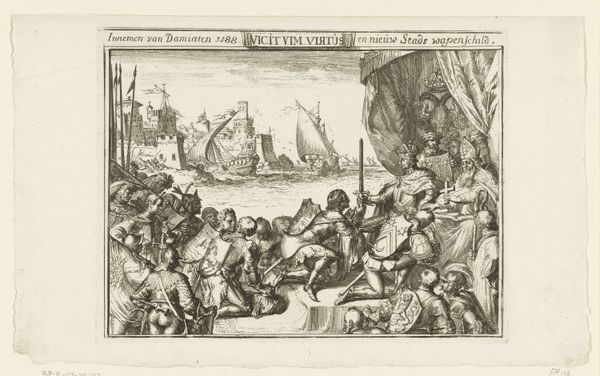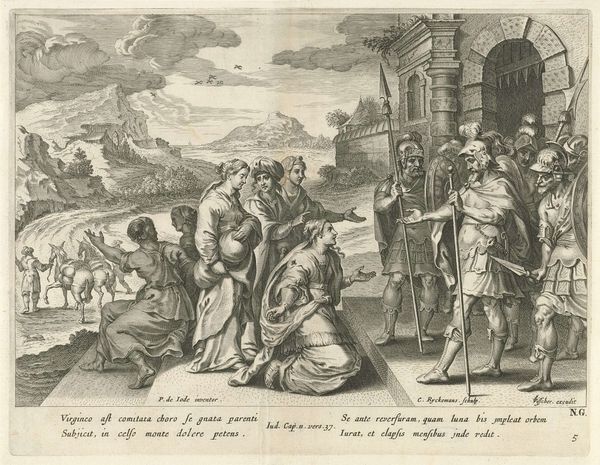
print, engraving
#
baroque
# print
#
cityscape
#
history-painting
#
engraving
Dimensions: height 164 mm, width 107 mm
Copyright: Rijks Museum: Open Domain
Curator: Let’s delve into this print, “Oosterse vrouw verwelkomd met een handkus,” or, “Eastern Woman Welcomed with a Kiss of the Hand,” housed here at the Rijksmuseum, an engraving attributed to Jacob Folkema dating from around 1702 to 1767. Editor: It's incredibly detailed, isn't it? I’m immediately struck by the implied textures—the rough stone of the castle in the background, the varied fabrics of the clothing, even the weight of those bundles being carried at the bottom. Curator: Absolutely. Looking at it through a contemporary lens, it raises important questions of representation and power. Who is this "eastern woman" and how is she being positioned within the broader context of Dutch societal views? Editor: Precisely! Consider the laborious process involved in creating this image. Each line, each dot would have required skilled labor. The finished print then, isn't simply a representation; it's a material object born of specific production methods reflecting an era steeped in complex relations between Europe and other continents. The artist's hand is evident, not just in the design, but in the actual physical engraving process. How did Folkema's economic position allow for the materials necessary to production? How did such materials affect his output? Curator: We must consider it was fashioned during the height of the Dutch Golden Age and the flourishing of the Dutch East India Company. Such representations arguably worked to legitimize those exploitative relationships and exoticized non-European people as an implicit show of dominance. The very gesture of welcoming her with a kiss on the hand reeks of patronization! Editor: Right! Think, too, of the distribution and consumption of prints like this. They were made to be circulated, duplicated. Consider who would have been buying this and the impact the art might have had. Was this disseminated for scientific research? Personal collections? The answers to these questions directly impact the piece’s intended influence. Curator: By examining this work critically, we can foster discussions around historical perspectives, and more modern topics such as intersectional identity, cultural stereotypes and biases. Editor: And by studying the materials, techniques and methods involved in production, we see a record of labour, of resources, and a reflection of the economy which birthed such artistic visions.
Comments
No comments
Be the first to comment and join the conversation on the ultimate creative platform.
